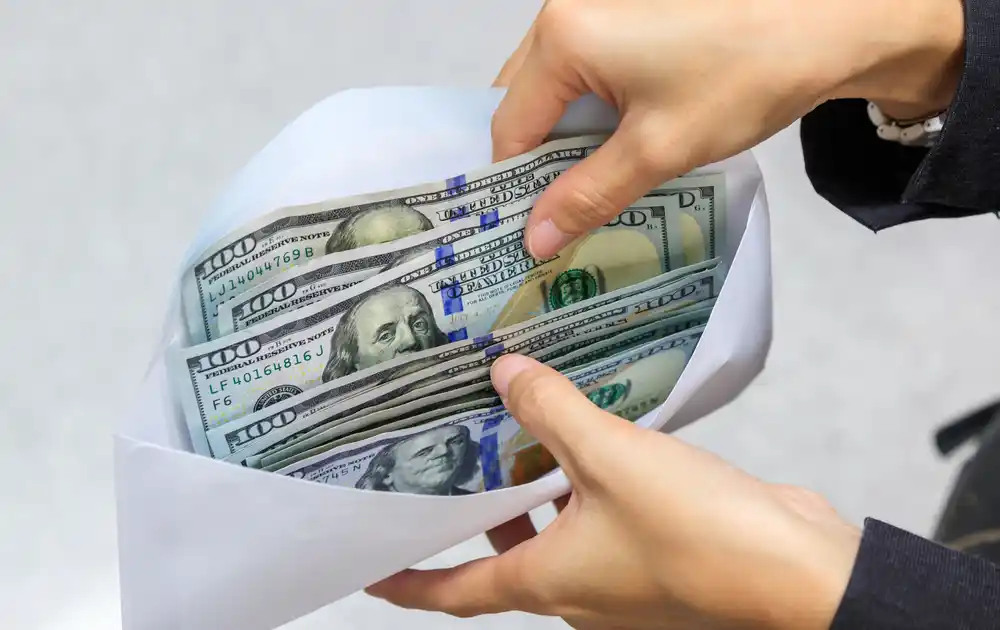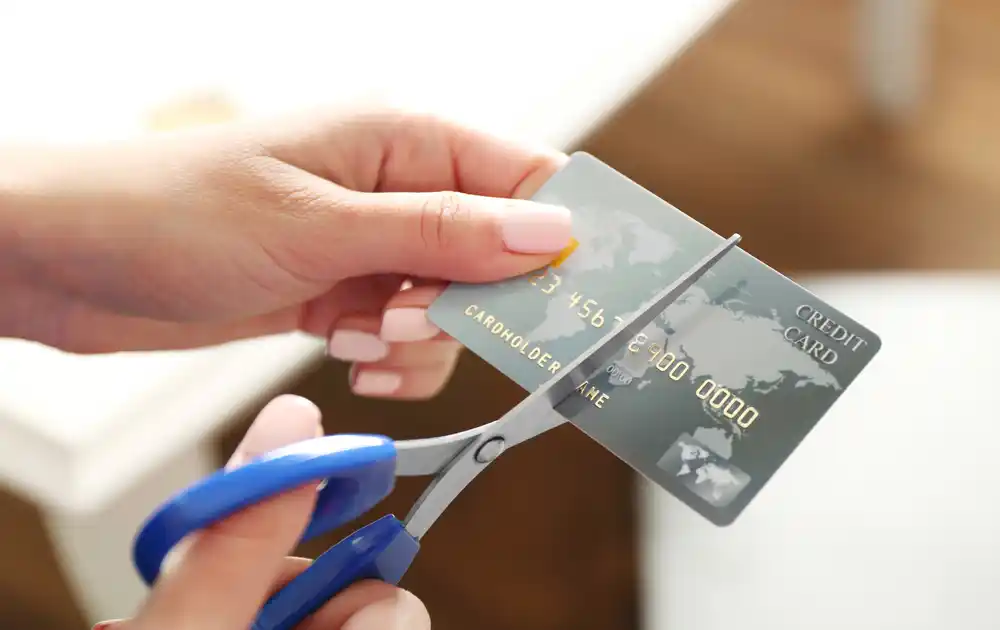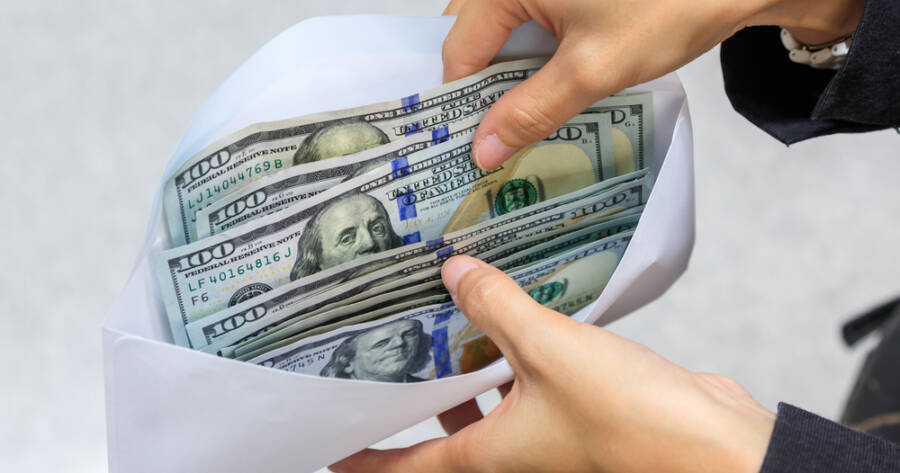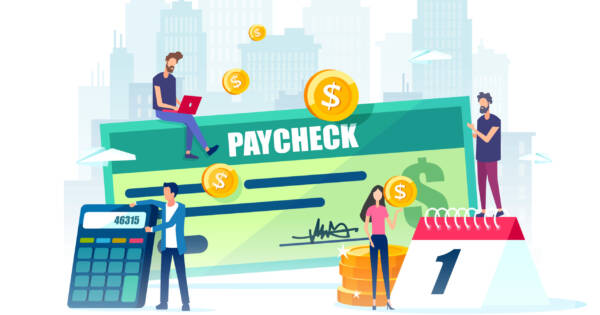Want to spend less money? Consider cash stuffing, also known as the cash envelope system. While the concept isn’t new, the old-school budgeting method has found new life on TikTok. The videos in the #cashstuffing hashtag have racked up millions of views, but you might not know all of the ins and outs.
Keep reading for a crash course to learn about the pros, cons, and how to make cash stuffing work for you. Let’s dig into the details!
How Does Cash Stuffing Work?
Since inflation is driving prices up and some fear a recession is on the way, it isn’t surprising that people are looking for ways to stay on budget. With this in mind, cash stuffing is a tool for making your spending choices more tangible. But how does it work?
In a nutshell, you allocate how much money you can spend on a certain category for the month. Then, tuck that much cash in an envelope to use when you buy something from that category. Once the cash is gone, you don’t buy anything else from the category.
 Shutterstock
ShutterstockPeople Generally Spend Less With Cash
Research suggests that people do, in fact, spend less when they pay with cash. In 2018, a ValuePenguin Credit Card Spending Report found that “people are willing to spend more — as much as 83% in some cases — when paying with a credit card instead of cash.” The source calls this phenomenon the “credit card premium.”
We don’t know what drives the phenomenon, but there are theories. Handing over cash may make the cost more tangible than swiping a credit card. The study found cash users were 82% better at remembering price details than credit card users. And individual transactions may seem smaller when grouped on a credit card statement.
 Shutterstock
ShutterstockUpsides of Cash Stuffing
If you want to rein in your spending, then cash stuffing could be a useful tool. It has several advantages, including reducing the use of credit cards. Using cash instead of credit cards limits not only overspending but also the possibility of incurring credit card debt.
Additionally, cash stuffing can make you more accountable and aware of your financial situation. As CFP Kendall Clayborn explains to GOBankingRates, “You are setting aside time every month to review your finances, create a budget, and set specific goals for the month.”
 Shutterstock
ShutterstockDownsides of Cash Stuffing
Of course, there are some potential downsides to consider. For one thing, cash isn’t protected. If it gets lost or stolen, then you’re out the money. Credit cards, on the other hand, typically have liability protection. Responsible credit card use can also help build credit and rack up rewards.
Cash sitting in envelopes at home also doesn’t earn interest like it would in a savings account. And then there’s the convenience factor. Credit cards are easy — which is part of the reason they enable overspending, but they do have their place. It may make sense to use a combination of cash stuffing and credit cards, given these points.
Shutterstock
How To Get Started
Before you can dive into cash stuffing, you need to decide which categories make sense to focus on. Ramsey Solutions recommends picking categories that “tend to bust your budget.” For example, you might create envelopes for groceries, restaurants, beauty, clothing, and entertainment.
Keep in mind that cash stuffing doesn’t have to be an all-or-nothing thing. So, it may make sense to ease into it with a couple of categories. Once you’ve selected categories, take a look at your overall expenses and figure out how much you want to spend on each category this month.
 Shutterstock
ShutterstockFill the Envelopes and Stick to Your Budget
After that, it’s time to label your envelopes and fill them up with the amount of cash you budgeted. Now comes the hard part — sticking to your budget. Let’s say you budgeted $500 for restaurants this month. When you go out to eat, grab cash from that envelope to cover the meal, drinks, and tip.
Make sure you don’t go over budget so you don’t have to resort to a credit card. If you get change back, then return it to the “Restaurant” envelope. That way, you can use it the next time you go out to eat. And, of course, once the $500 is gone, it’s gone — you don’t spend more money at restaurants this month.
 Shutterstock
ShutterstockWhat About Online Purchases?
In this day and age, it’s challenging to avoid online purchases entirely. Even some brick-and-mortar businesses don’t accept cash. Sometimes making an online purchase allows you to use a coupon code that makes the item cheaper than if you bought it in store with cash. Fortunately, cash stuffing can easily accommodate non-cash payments. Here’s the deal: grab another envelope and label it something like “Online Spending” or “Non-Cash Purchases.”
After you make a non-cash purchase, go to the correct category’s envelope and take out the amount you spent. Then, put the cash into the envelope for non-cash purchases. So, if you bought clothes online, you’d move money from the “Clothing” envelope. Before making a non-cash purchase, make sure it falls within your budget.
 Shutterstock
ShutterstockCan Cash Stuffing Help You Stick to a Holiday Budget?
Whether or not cash stuffing makes sense for your monthly budget, it’s a clever hack come the holiday season. After all, it can be easy to lose sight of your budget during the season of gift giving. All of those sales and promotions can quickly lead to overspending.
But that’s where cash stuffing can come into play. Make an envelope for everyone on your shopping list, set a budget for each one, and fill up the envelope with the amount of money you’ve budgeted. Beyond keeping you on budget, it also helps you catch instances of unintentionally spending way more on one person than the others.

What If You Don’t Spend All of the Money?
First of all, congrats on coming in under budget! It’s OK to reward yourself with a treat like a fancy coffee or a night at the movies, depending on how much money is left over. Sticking to your budget is something to celebrate.
Alternatively, you could put the leftover money toward things like credit card debt or your retirement accounts. It really depends on your situation. You also have the option to roll it over to your budget next month.
 Shutterstock
ShutterstockThe Bottom Line
Cash stuffing can help you avoid overspending and take control of your budget. It’s a way to make spending more tangible in order to develop better budgeting and spending habits. And it can even be adapted to accommodate online shopping.
If you think it could work for you, then remember that cash stuffing doesn’t have to be an all-or-nothing thing. You could test it out with one or two categories that tend to bust your budget. Then, keep expanding to more categories if the system works for you.
 Shutterstock
Shutterstock








